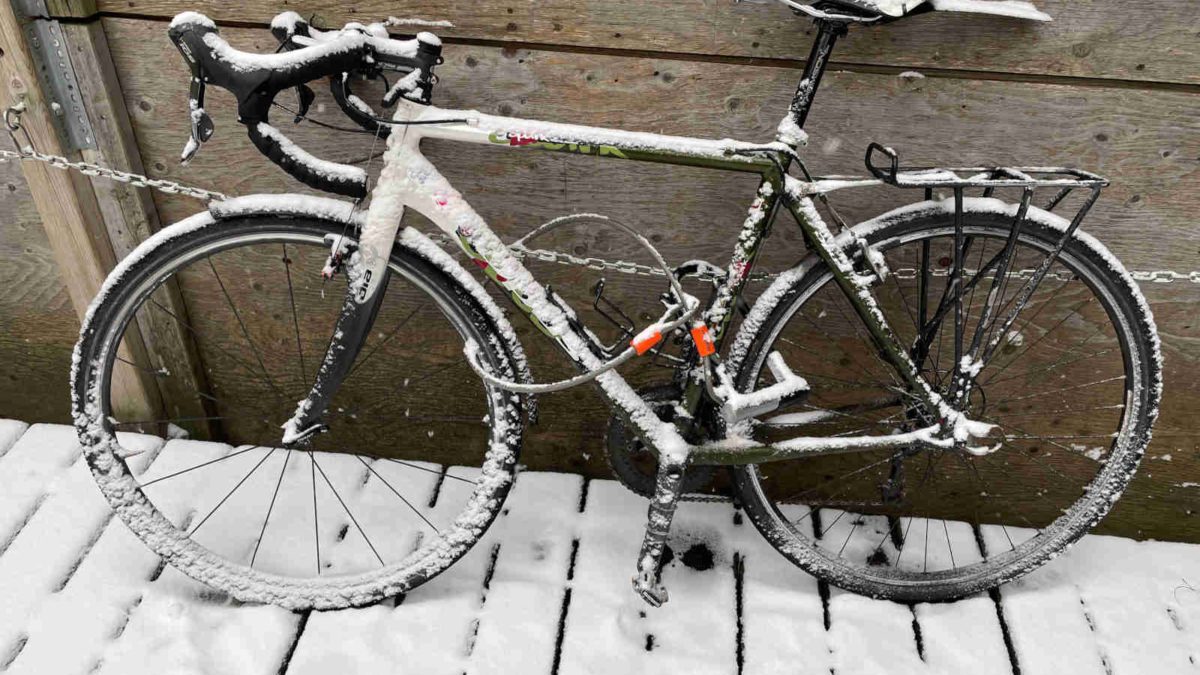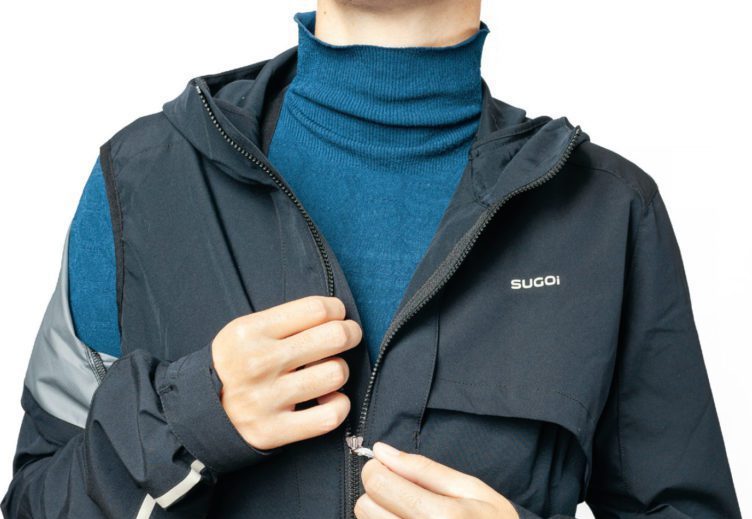5 tips for safer snow and slush commuting
Winter is here, but you can keep riding

Most Canadian cities are having their first, or even their second snowfall, but there’s no reason it should stop you from riding to work. With more people returning to the office, it means there’s going to be more cyclists out there riding. With the increase in cyclists over the past two years during the COVID-19 pandemic, you’re bound to bump into another rider you know in these cold months. Even with all the new riders out there, there’s no reason not to use your bike to get to and from work or school.
A winter commuting bike with fenders, front and rear lights, treaded or studded tires makes cycling through slush and snow completely doable. That being said, there are some things you should remember as you go riding in a winter wonderland.
1. Adjust your riding style to the conditions
This may seem obvious but it’s key to be extra-cautious when you’re riding in snow, slush and ice. The bike paths may have been cleared in the morning, but there may have been a fresh dump before your ride home. Be mindful of any icy ruts that lay beneath the snow, or new grooves that may have formed from other riders riding on it.
When it’s hovering around the freezing mark, it’s also important to be aware of black ice. If you see a puddle, it might not be wet , may be frozen and will definitely throw you off course on your way to work.
If you are riding through some snow or slippery slush, sit a little further back on your saddle and push a slightly harder gear to lower your cadence. A lower RPM will give you more stability.
2. Give cars even more room
Lousy motorists are the bane of any commute to work. It goes without saying that being a defensive rider is an unfortunate fact of life when it comes to riding in the city, but even more so in the winter. Car drivers can be extra unpredictable in crappy weather, either because of their inexperience with the conditions, lack of winter tires, or even time management. Drivers may not factor in the weather for their drive to work and find drive more aggressively than usual. Plus, just like on our bikes, they may mot notice a slippery section and find their car moving erratically. Of course, that’s not the cyclist’s fault, but it may mean giving motorists an even bigger wide berth. Depending on the city in which you live, you may or may not have adequately plowed bike paths, so passing cars on the right should be done cautiously or you may find a big pile of snow that was left behind by a plow or snow shovel.
Please keep your vehicles off the road tonight. We are expecting a lot of snow, and our crews will be out. If your car is on the street then it may mean that the entire street is not plowed, and your car may be towed. Thanks for keeping our streets clear. pic.twitter.com/dOL0efKCi9
— Paul Russell (@SackvillePaul) December 8, 2021
3. Your bike can become a salt lick, fast
Although some cities are trying to use less salt, and more sand, most of the time you’ll notice most of the roads will be piles of sodium chloride. After a cold winter ride home, the last thing you might want to do is give your bike a onceover, but it’s a good idea to get in the habit of doing a quick wipe of your frame, and a bit of lube. You’ll be grateful the next morning when you head out.
4. Give yourself extra time
Even if the roads and paths are plowed, the ice is melted and the sun is out, you’re still going to be a bit slower in the cold. All the extra clothes and cold air will keep your speed lower than in the summer. It’s a good idea to give yourself 5-10 minutes extra for your commute to be on the safe side. That also gives you a buffer if there are some snowy patches that you have to slog through. Being relaxed and not anxious about being late will also be better for your mindset when you’re navigating through winter riding.
I love a light dusting of snow in the bike lane overnight to prove that if you provide safe infrastructure people will ride their bikes in the winter. pic.twitter.com/q0SfvHxtoH
— Brent Bellamy (@brent_bellamy) December 3, 2021
5. Bring an extra base layer or jacket
The weather can change quickly here, so it’s best to be prepared. Stuffing a windbreaker or shell in your back pocket, pannier or frame bag is a good habit to get into. Another thing to think about is an extra base layer. When you’re layered up, you can get pretty sweaty and a fresh base layer will feel great when you come home.



